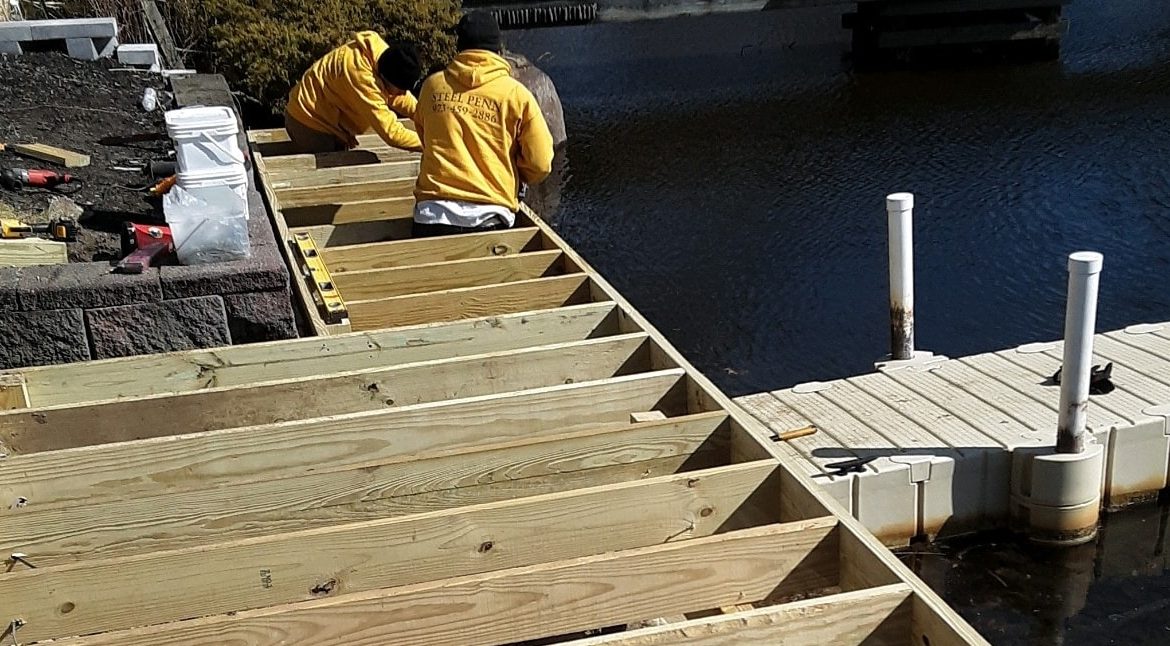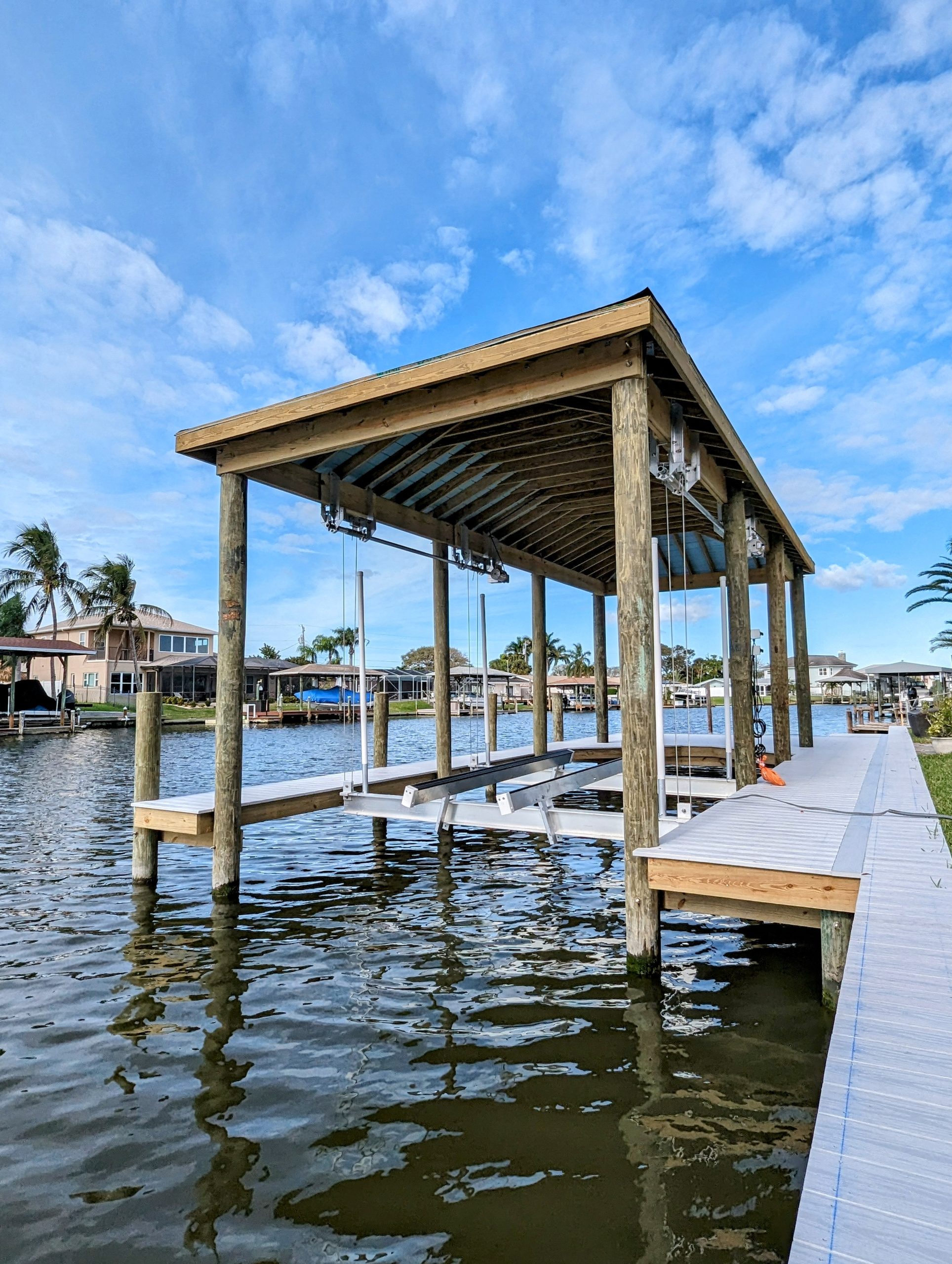Professional Insights on Long-Lasting Dock Repairs Solutions
Professional Insights on Long-Lasting Dock Repairs Solutions
Blog Article
Reliable Dock Repair Techniques: Ensuring Structural Integrity
Ensuring the structural integrity of anchors with reliable repair work methods is extremely important for the long life and safety of marine centers. Consequently, picking the best repair materials, such as composite products and corrosion-resistant alloys, is vital for resilience.
Examining Dock Damage
Evaluating dock damage is a vital first action in ensuring the structural stability and safety and security of any docking facility. Key elements to take a look at consist of the dock's structure, pilings, decking, and hardware (Dock Repairs).
Architectural designers or qualified examiners typically perform these analyses making use of specialized devices and strategies. As an example, undersea evaluations may employ finder tools or remotely operated lorries (ROVs) to find immersed damage. Above water, aesthetic assessments are complemented by utilizing wetness meters and other analysis devices to uncover underlying problems not quickly noticeable to the naked eye.

Finding Fixing Products
Selecting the proper repair materials is an essential action in the dock remediation process, one that directly affects the longevity and performance of the repaired framework. Product choice need to be driven by variables such as ecological problems, load-bearing needs, and compatibility with existing dock components. Wood is a traditional option for docks due to its natural strength and aesthetic allure. Nevertheless, picking the ideal kind of wood, such as pressure-treated lumber or naturally rot-resistant species like cedar or teak wood, is vital to withstand marine environments.
In enhancement to timber, composite products are increasingly prominent as a result of their durability and low maintenance demands. Composites, generally made from a mix of plastic and timber fibers, supply outstanding resistance to rot, pests, and UV damages. For steel docks, selecting corrosion-resistant alloys such as galvanized steel or marine-grade aluminum is crucial to protect against rust and make sure structural honesty in saline water problems.
Epoxy materials and marine-grade sealants are crucial for fixing splits and sealing joints, supplying a waterproof obstacle and boosting the dock's total stamina. By meticulously choosing high-quality products, dock repair work can attain long-lasting results, therefore protecting against future deterioration and making sure risk-free, reliable use.
Architectural Reinforcement Methods
Reliable structural support strategies are critical in making sure the security and durability of dock repairs. One fundamental method involves using steel or composite support bars (rebar) within concrete frameworks. Rebar supplies additional tensile stamina, preventing cracks and dispersing loads more equally. This technique is especially reliable for docks subjected to hefty lots or harsh environmental conditions.
Another vital strategy is the application of fiber-reinforced polymers (FRP) These materials offer high strength-to-weight proportions and superb resistance to deterioration, making them ideal for reinforcing wooden or concrete anchors. FRP can be applied in sheets or strips and bound with epoxy materials to boost architectural stability.
Supporting and securing systems also play an important function in structural reinforcement. Cross-bracing, making use of metal or wooden beams, can combat lateral forces, lowering important site persuading and activity. Securing systems, such as helical piers or driven heaps, offer a steady foundation by transferring loads to deeper, more stable soil layers.
Finally, the assimilation of load-distribution plates can aid distribute weight extra uniformly across the dock's surface, minimizing local stress and anxiety factors. These strategies jointly ensure that anchors continue to be safe and robust, capable of enduring the roughness of their functional atmosphere.
Advanced Repair Work Approaches

One more innovative technique entails underwater welding, which permits repair services to be conducted without the need to dewater the location. This approach is particularly useful for addressing structural problems in submerged dock elements, ensuring minimal disruption to procedures. Enhanced welding strategies, coupled with robotic systems, supply precision and integrity, therefore extending the life-span of the dock.
Additionally, cathodic protection systems are executed to avoid corrosion in metallic dock frameworks. By utilizing sacrificial anodes or amazed existing systems, these strategies efficiently minimize the electrochemical procedures that lead to product deterioration.
Last but not least, progressed surveillance modern technologies, such as structural wellness tracking (SHM) systems, provide real-time data on the condition of dock structures. These systems make it possible for positive maintenance and timely treatments, inevitably making sure the long-lasting architectural stability of the dock.
Upkeep and Avoidance
Upkeep and avoidance are basic principles that underpin the long life and security of dock frameworks. Routine inspections are critical, enabling very early detection of damage, possible weak points, and environmental influences. An aggressive approach, entailing regular look for corrosion, rot, and architectural changes, minimizes pricey repair work and extends the dock's operational life.
Safety nets must include using safety finishes to steel elements to defend against corrosion and using cured wood to resist decay. In addition, ensuring correct drain and air flow can prevent water build-up, which is a typical root cause of structural deterioration. Integrating top quality products and adhering to producer guidelines throughout building and construction and repair phases additionally play crucial roles in my site boosting sturdiness.

Educating personnel in dock maintenance finest methods guarantees regular application of safety nets. Leveraging technical breakthroughs, such as drones for inspections and sensing units for real-time monitoring, can better enhance upkeep see here efforts. By prioritizing upkeep and prevention, dock proprietors can ensure architectural integrity, operational safety and security, and cost-efficient administration over the dock's life-span.
Final Thought
To conclude, keeping the structural stability of aquatic centers requires thorough dock repair methods. Thorough examinations using sophisticated devices discover both noticeable and hid damages, while the selection of suitable repair service products enhances resilience. Carrying out architectural support techniques addresses tension points properly. Advanced fixing methods, combined with routine maintenance practices, ensure the dock continues to be functional and risk-free under diverse ecological conditions. Adopting these approaches dramatically extends the life expectancy and functionality of marine infrastructure.
Ensuring the structural honesty of docks via effective repair work methods is extremely important for the long life and safety of marine facilities.Selecting the proper repair products is a critical step in the dock restoration process, one that straight influences the durability and performance of the repaired structure.Efficient architectural support strategies are essential in making certain the security and durability of dock repair work. By prioritizing upkeep and avoidance, dock proprietors can make sure structural stability, functional safety and security, and cost-efficient monitoring over the dock's life-span.
In verdict, preserving the architectural stability of aquatic centers necessitates detailed dock repair service methods.
Report this page